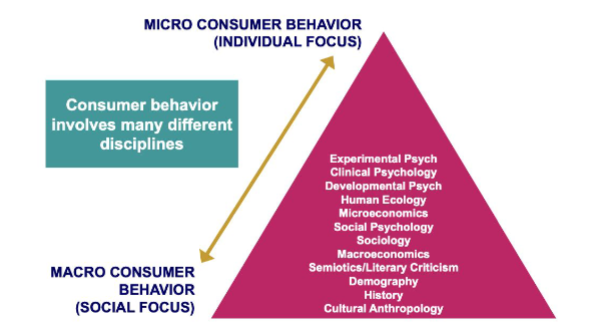Lecture 1 - Buying, Having, Being
1/17
There's no tags or description
Looks like no tags are added yet.
Name | Mastery | Learn | Test | Matching | Spaced |
|---|
No study sessions yet.
18 Terms
consumer behavior
The study of the processes involved when individuals or groups select, purchase, and
use or dispose of products, services, ideas, or experiences to satisfy needs and desires.
prepurchase issues, purchase issues, postpurchase issues
stages in the consumption process
Market segmentation
_ is the process of dividing a market of potential
customers into groups, segments, based on different characteristics.
The segments created are composed of consumers who will respond
similarly to marketing strategies and who share traits such as similar
interests, needs, or locations
80/20 rule
rule for dividing consumers
Database Marketing
Tracks specific consumersʼ buying habits very closely and crafts products and
messages tailored precisely to peopleʼs wants and needs based on this information.
Relationship Marketing
Strategy designed to foster customer loyalty, customer
interaction and long-term engagement.
Uses personalization and differentiation
Role theory
We as consumers seek the lines, props, and costumes
necessary to put on a good performance.
Because people act out many different roles, they
sometimes alter their consumption decisions depending
on the particular “play” they are in at the time.
self-concept attachment
nostalgic attachment
interdependence
love
types of relationships between consumers and brands
functional and psychological needs
2 types of buyer needs
FUNCTIONAL NEEDS
PSYCHOLOGICAL NEEDS
Pertain to the performance of a product or
service
Pertain to the personal gratification
consumers associate with a product or
service
need for affiliation
need for power
need for uniqueness
CONSUMER NEEDS
physiological needs, safety needs, social needs, esteem needs, self-actualization
maslow’s hierarchy of needs
Disciplinary Focus
Experimental Psychology
Clinical Psychology
Human Ecology
Social Psychology
Sociology
Macroeconomics
Demography
History
Cultural Anthropology
Product Role
Perception, learning, and memory processes
Psychological adjustment
Allocation of individual or family resources
Behavior of individuals as members of social groups
Social institutions and group relationships
Consumers' relations with the marketplace
Measurable characteristics of a population
Societal changes over time
Society's beliefs and practices

The Pyramid of Consumer Behavior